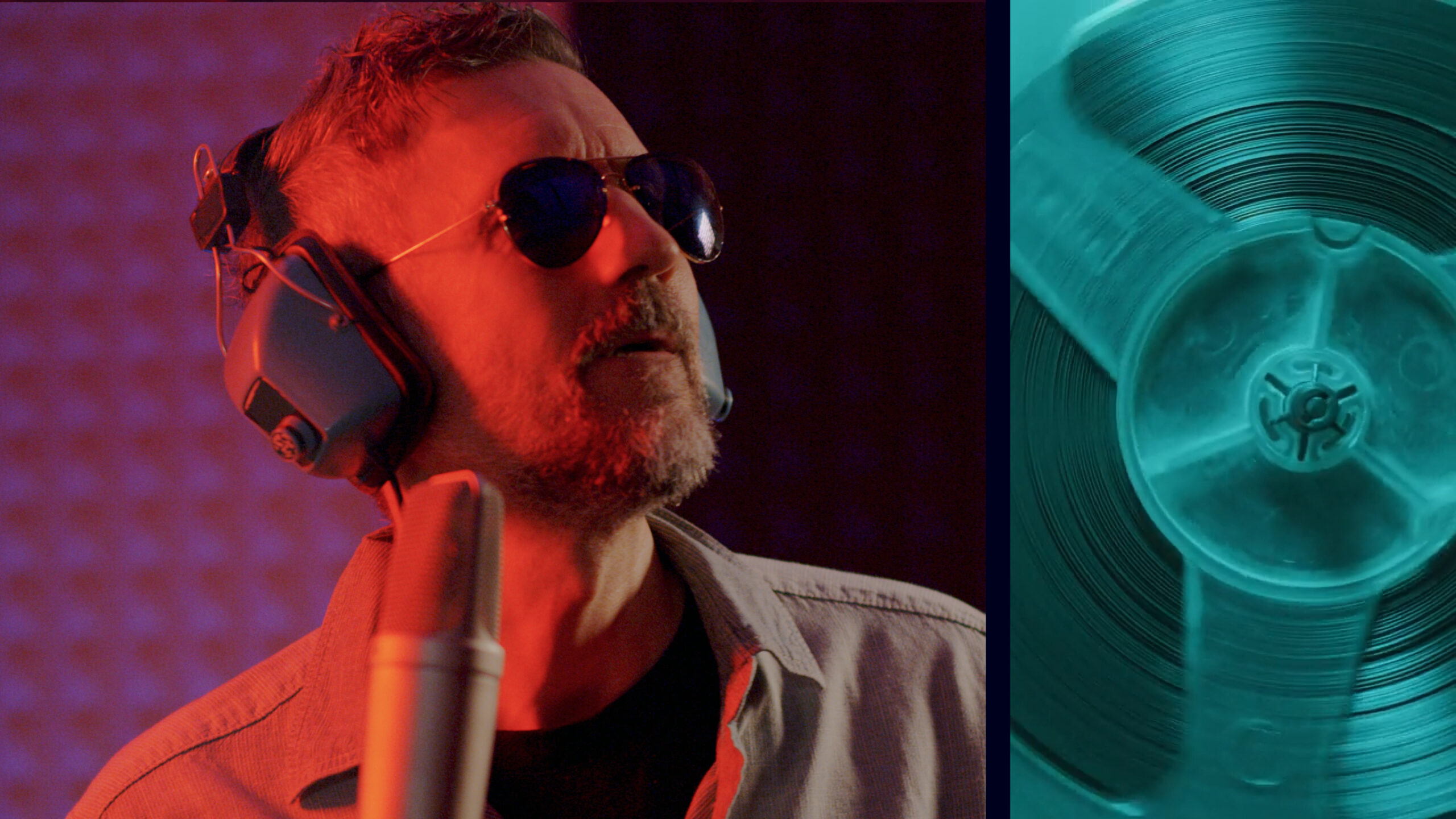Ever listened to a podcast or watched a commercial and noticed that distinct, creaky voice quality that seems to be everywhere these days? That is vocal fry. Love it or hate it, this polarizing vocal technique has taken the world of voiceovers by storm.
In this blog, we’ll dive deep into the world of vocal fry, exploring its impact on the voiceover industry and even touching on how AI is changing the game. By the end, you’ll have a solid grasp on what vocal fry is, when to use it, and when to steer clear.
Summary
What is vocal fry?
Vocal fry, also known as glottal fry or creaky voice, is a low-pitched vocal register characterized by a distinct crackling or popping sound. It happens when the vocal folds are loosely closed and vibrating at their lowest frequency. This creates a sound that’s often described as creaky, gravelly, or like bacon sizzling in a pan.
But what does vocal fry actually sound like? Chances are you’ve heard Kim Kardashian speak at some point in the last 15 years. She’s known for her prominent use of vocal fry, especially at the end of sentences.
However, it’s not just a celebrity thing — you’ve probably heard it in everyday conversations too. Some research even suggests that women who use vocal fry are considered trusted and are more likely to have upward mobility in their careers.
The impact of vocal fry in voiceovers
In the voiceover industry, vocal fry is a bit of a double-edged sword. Its perception can vary widely depending on the audience, genre, and context of the voiceover project.
Some listeners find vocal fry engaging and relatable, associating it with a casual, approachable tone. Others perceive it as unprofessional or irritating, especially when overused. This split reaction makes it a challenging technique for voiceover artists to navigate.
Audience reactions to vocal fry
The reception of vocal fry can differ dramatically across various voiceover genres:
- Commercials: In youthful, trendy ads, a touch of vocal fry might add authenticity. However, for luxury brands or more formal products, it could be seen as inappropriate, as it’s not considered refined and luxurious.
- Audiobooks: While some listeners enjoy the intimate feel vocal fry can bring to narration, others find it distracting, especially over long listening sessions.
- Podcasts: Vocal fry is quite common in podcasting, often adding a conversational, relatable quality to the host’s voice.
Industry trends
The voiceover industry’s stance on vocal fry is evolving. While traditionally seen as a vocal fault to be avoided, some casting directors now seek out voices with a bit of fry for certain projects. However, the key is moderation — excessive vocal fry is still generally frowned upon in professional settings.
The role of AI in voiceovers and vocal fry
As the voiceover landscape continues to evolve, AI voice generators are making waves in the industry. These cutting-edge tools are changing how we approach voiceovers, including the handling of vocal characteristics like fry.
AI voice generators use advanced algorithms to create synthetic voices that sound remarkably human-like. These tools can produce voiceovers for various applications, from marketing videos, social media, educational videos and more.
Creating fry-free voiceovers with AI
One of the advantages of AI-generated voices is the ability to control vocal characteristics precisely. This means you can create voiceovers that are completely free from vocal fry if desired. For projects where a clean, crisp voice is crucial, AI can be a game-changer.
There are several AI voiceover tools available in the market. It’s worth exploring options like Artlist’s AI voice generator. These tools often offer a range of voice styles and customization options, allowing you to fine-tune the voice to your project’s needs.
On the other hand, AI voiceover generators can be a cost-effective and high-quality solution for creating voiceover using the vocal fry technique. Artlist, for example, has voices in its catalog that use vocal fry.
When vocal fry might be a good choice
Despite its controversial nature, there are scenarios where vocal fry can actually enhance a voiceover:
1. Creating a relatable character: For certain demographics, especially younger audiences, a touch of vocal fry can make a character feel more authentic and relatable.
2. Emphasizing key points: Used sparingly, vocal fry can add emphasis to important words or phrases, drawing the listener’s attention.
3. Conveying emotion: In some cases, vocal fry can help express emotions like exhaustion, boredom, or nonchalance effectively.
4. Genre-specific use: In genres like indie music or alternative podcasts, vocal fry might align well with the overall aesthetic and audience expectations.
5. Portraying specific personalities: When voicing characters known for their laid-back or “cool” personas, a bit of vocal fry can help nail the characterization.
Remember, the key to using vocal fry effectively is moderation. A little can go a long way in adding character to your voice, but too much can become grating or unprofessional.
Mastering vocal fry: Tips and techniques
If you’re interested in incorporating vocal fry into your voiceover toolkit, here are some tips on how to vocal fry effectively:
- Start with relaxation: Vocal fry occurs naturally when your vocal folds are relaxed. Practice deep breathing and releasing tension in your throat.
- Find your lowest comfortable pitch: Speak at the bottom of your natural range, where your voice starts to “break” or crackle.
- Practice with words: Start with single words, focusing on the ending sounds. Words ending in vowels often work well for practicing vocal fry.
- Experiment with sentence endings: Many people naturally incorporate vocal fry at the end of sentences. Try this out and see how it feels.
- Listen and imitate: Study examples of vocal fry in media and try to replicate the sound. Recording yourself can help you refine your technique.
- Use it sparingly: Remember, a little goes a long way. Use vocal fry as a seasoning, not the main ingredient in your vocal performance.
Wrapping up
Vocal fry in voiceovers is a complex topic with no one-size-fits-all answer. While it can add character and relatability to certain voices, it can also be perceived as unprofessional or irritating when overused. The key is understanding your audience, the context of your project, and using vocal fry judiciously when appropriate.
Whether you’re a voiceover artist honing your craft or a content creator looking for the perfect voice for your project, understanding the nuances of vocal techniques like fry can give you an edge.
Ready to dive deeper into the world of voiceovers? Check out our other articles on the Motion Array blog for more tips, tricks, and insights into the exciting world of audio production. Whether you’re looking to improve your own vocal techniques or explore the possibilities of AI voice generation, we’ve got you covered.



























